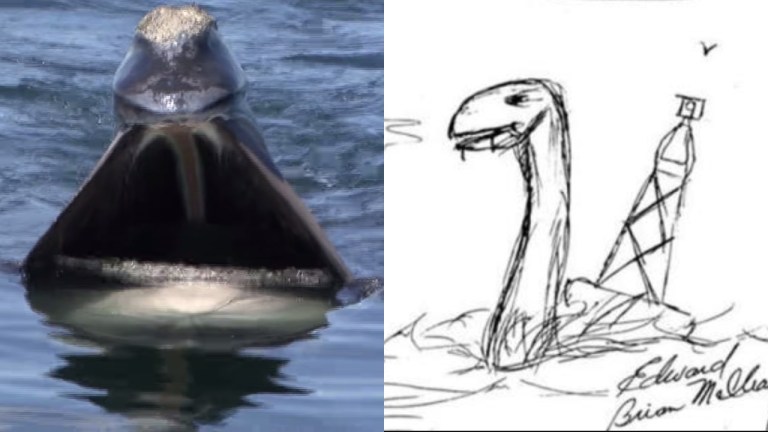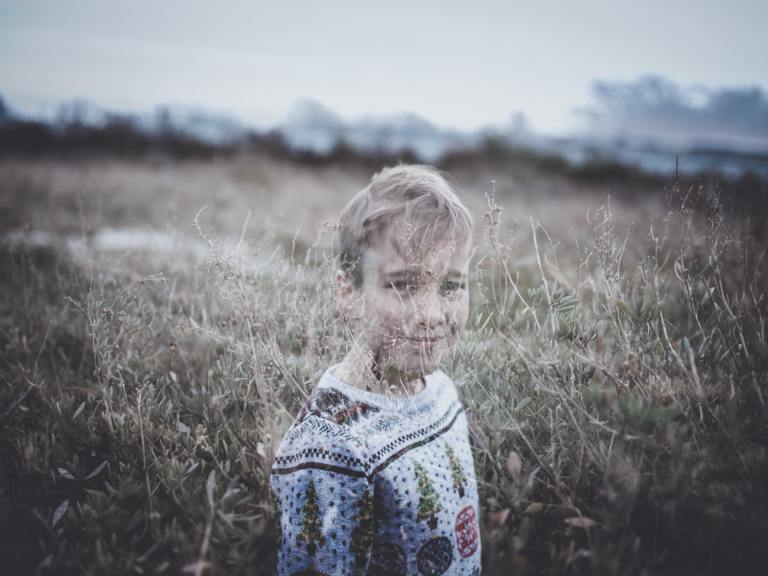
46 (Real?) Creatures That Terrify People Around The World
Africa
1. Agogwe
Some years ago I was sent on an official lion-hunt in this area (the Ussure and Simibit forests on the western side of the Wembare plains) and, while waiting in a forest glade for a man-eater, I saw two small, brown, furry creatures come from dense forest on one side of the glade and disappear into the thickets on the other. They were like little men, about 4 feet high, walking upright, but clad in russet hair. The native hunter with me gazed in mingled fear and amazement. They were, he said, agogwe, the little furry men whom one does not see once in a lifetime. – Captain William Hichens
2. Gambo

“Gambo” is the name given to a carcass of an unidentified large marine animal that was reportedly washed up on Bungalow Beach in The Gambia. – Source
3. Koolakamba
The Koolakamba or Kooloo-Kamba is purported to be a hybrid species of two different ape species; namely chimpanzees and gorillas. This alleged hybrid ape species has been reported in Africa as early as the mid 19th century though to date no empirical evidence has been found to substantiate the existence of the creature and it has no entry in the NCBI taxonomical database. The Koolakamba was referenced in the mid-19th century in French work by Franquet (1852, as cited by Shea, 1984) and in some descriptive work of DuChaillu from 1860, 1861, 1867, and 1899; some of which was republished in 1969 (Explorations and Adventures in Equatorial Africa). – Source
Asia
1. Aswang
[youtube=http://www.youtube.com/watch?v=2ePhqoyLpXQ&w=584&h=390]
It is said that to spot an aswang at daytime, look at their eyes. The person in front of you is an aswang if your reflection is upside-down. Another way of knowing is looking in a tuwad manner. The person is an aswang if the image of the person is different. – Source
2. Barmanou
The Barmanou is alleged to possess both human and apelike characteristics and is said to abduct women and attempt mating with them. It is also reported to wear animal skins upon its back and head. The Barmanou appears in the folklore of the Northern Regions of Pakistan and depending on where the stories come from it tends to be either described as an ape or a wild man. – Source
It is described as resembling a dragon or dinosaur, and is the subject of a number of regional legends, some which are said to date back to the 13th century. – Source
4. Hibagon
The Hibagon is described as a “black creature with white hands and large white feet, standing about five feet tall.” – Source
5. Issie

Issie is a legendary Japanese lake monster; said to lurk in Lake Ikeda, on Kyushu Island. It is described as being saurian in appearance. The name is formed in analogy with “Nessie” (the Loch Ness Monster). – Source
6. Kaijin
According to a Japanese Materia medica, he was almost close to a man, in addition to chin hair and eyebrows, between the fingers and limbs is a description of some skin. He ate food and drank but never spoke. – Source
7. Kappa

Kappa are typically depicted as roughly humanoid in form, and about the size of a child. Their scaly, reptilian skin ranges in color from green to yellow or blue. Kappa supposedly inhabit the ponds and rivers of Japan and have various features to aid them in this environment, such as webbed hands and feet. – Source
Lake Tianchi Monster is the name given to what is said to be a lake monster that lives in Heaven Lake (known as Cheonji in Korean) located in the peak of Baekdu Mountain within the Baekdudaegan and Changbai mountain ranges encompassing Jilin Province of China and Ryanggang Province of North Korea. – Source
9. Manananggal
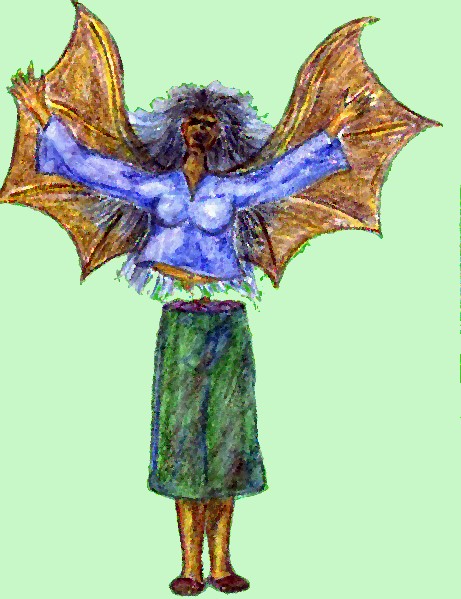
The manananggal (sometimes confused with the Wak Wak) is a mythical creature of the Philippines, an evil, man-eating and blood-sucking monster or witch. It is described as hideous, scary, often depicted as female, and capable of severing its upper torso and sprouting huge bat-like wings to fly into the night in search of its victims. – Source

The worm is the subject of a number of claims by Mongolian locals – such as the ability of the worm to spew forth an acid that, on contact, will turn anything it touches yellow and corroded (and which would kill a human), as well as its reported ability to kill at a distance by means of electric discharge. – Source
In May 2001, reports began to circulate in the Indian capital New Delhi of a strange monkey-like creature that was appearing at night and attacking people. Eyewitness accounts were often inconsistent, but tended to describe the creature as about four feet (120 cm) tall, covered in thick black hair, with a metal helmet, metal claws, glowing red eyes and three buttons on its chest; others, however, described the Monkey-man as having a more vulpine snout, and being up to eight feet tall, and muscular; it would leap from building to building like a parcour enthusiast. Still others have described it as a bandaged figure or as a helmeted thing. Theories on the nature of the Monkey Man ranged from an Avatar of the Hindu god Hanuman, to an Indian version of Bigfoot. – Source
12. Orang-bati
The orang-bati is a winged cryptid rumored to inhabit the Indonesian island of Seram. According to local folklore, the bat-like or somewhat monkey-like creatures abduct children and carry them away to be eaten. Other accounts sound more like encounters with living Pterosaurs. – Source
13. Tsuchinoko
Tsuchinoko are described as being between 30 and 80 centimetres in length, similar in appearance to a snake, but with a central girth that is much wider than its head or tail, and as having fangs and venom similar to that of a viper.[1] Some accounts also describe the tsuchinoko as being able to jump up to a meter in distance.
According to legend, some tsuchinoko have the ability to speak and a propensity for lying, and is also said to have a taste for alcohol. Legend records that it will sometimes swallow its own tail so that it can roll like a hoop, similarly to the mythical hoop snake. – Source
14. Yeren
[youtube=http://www.youtube.com/watch?v=Hn-xq_H7H5c&w=584&h=390]
Witnesses typically report the creatures to be covered in reddish colored hair. Some white specimens have also been sighted. Their height is estimated to range from six to eight feet, although some colossal examples allegedly in excess of ten feet tall have been reported. Overall, it is smaller than the American Bigfoot. Like Bigfoot, the yeren is peaceful and will generally quietly walk away when encountering people in the Zhejiang province. – Source
Central America
1. Chupacabra
[youtube=http://www.youtube.com/watch?v=ggMWBHivne0&w=584&h=390]
The first reported attacks occurred in March 1995 in Puerto Rico. In this attack, eight sheep were discovered dead, each with three puncture wounds in the chest area and completely drained of blood. A few months later, in August, an eyewitness, Madelyne Tolentino, reported seeing the creature in the Puerto Rican town of Canóvanas, when as many as 150 farm animals and pets were reportedly killed. In 1975, similar killings in the small town of Moca were attributed to El Vampiro de Moca (The Vampire of Moca). Initially, it was suspected that the killings were committed by a Satanic cult; later more killings were reported around the island, and many farms reported loss of animal life. Each of the animals was reported to have had its body bled dry through a series of small circular incisions. – Source
Europe
1. Black Shuck
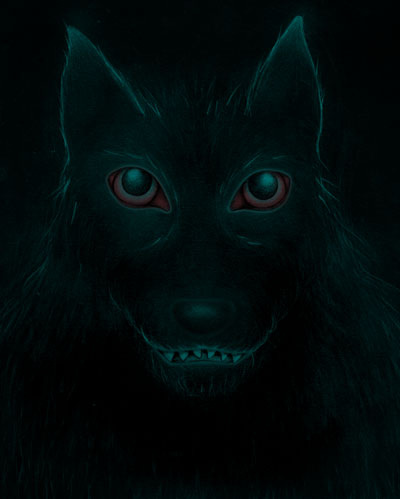
Black Shuck is one of many ghostly black dogs recorded across the British Isles. Sometimes recorded as an omen of death, sometimes a more companionable animal, it is classified as a cryptid, and there are varying accounts of the animal’s appearance. Writing in 1877, Walter Rye stated that Shuck was “the most curious of our local apparitions, as they are no doubt varieties of the same animal. – Source

The Canvey Island Monster is the name given to an unusual creature whose carcass washed up on the shores of Canvey Island, England, in November, 1953. – Source
The body was bluish, devoid of hair, with some little spots mainly in neck and face. Its total length was approximately 12 centimeters. It showed a protuberance in the forehead area, elongated ears, reddish eyes and a snout similar to that of rodents. Its fingers showed interdigital membranes. – Source
4. Kelpie

The kelpie is a supernatural water horse from Celtic folklore that is believed to haunt the rivers and lochs of Scotland and Ireland; the name may be from Scottish Gaelic cailpeach or colpach “heifer, colt”. – Source
[youtube=http://www.youtube.com/watch?v=JtAqupVD5TI&w=584&h=390]
The serpentine creature is said to live and often be sighted raising its back above the water in Lagarfljót, a freshwater, below-sea-level, glacial-fed lake which has very poor visibility as a result of siltation. It is described as longer than a football field, or 300 feet (91 m), and has also been reported outside the water, lying coiled up or slithering into the trees. Sometimes it is said to be as long as the lake itself, 30 kilometres (19 mi). It is a “many humps” type of lake monster, rather than the simply serpentine type of, for example, the Loch Ness Monster. – Source
6. Lariosauro

Lariosauro is a cryptid reported to live in Lake Como in Italy, about 30 miles north of Milan. Como is one of the deepest European lakes, at about 410 m (1200 feet) at the deepest location. – Source
7. Owlman
The Owlman, sometimes referred to as the Cornish Owlman, or the Owlman of Mawnan, is a purported cryptid that was supposedly sighted around mid-1976 in the village of Mawnan, Cornwall. – Source
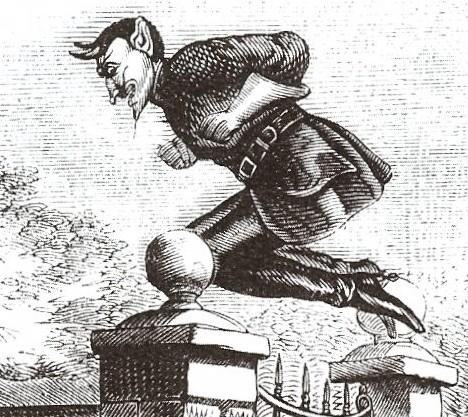
Spring-heeled Jack was described by people who claimed to have seen him as having a terrifying and frightful appearance, with diabolical physiognomy, clawed hands, and eyes that “resembled red balls of fire”. One report claimed that, beneath a black cloak, he wore a helmet and a tight-fitting white garment like an oilskin. Many stories also mention a “Devil-like” aspect. Others said he was tall and thin, with the appearance of a gentleman. Several reports mention that he could breathe out blue and white flames and that he wore sharp metallic claws at his fingertips. At least two people claimed that he was able to speak comprehensible English. – Source
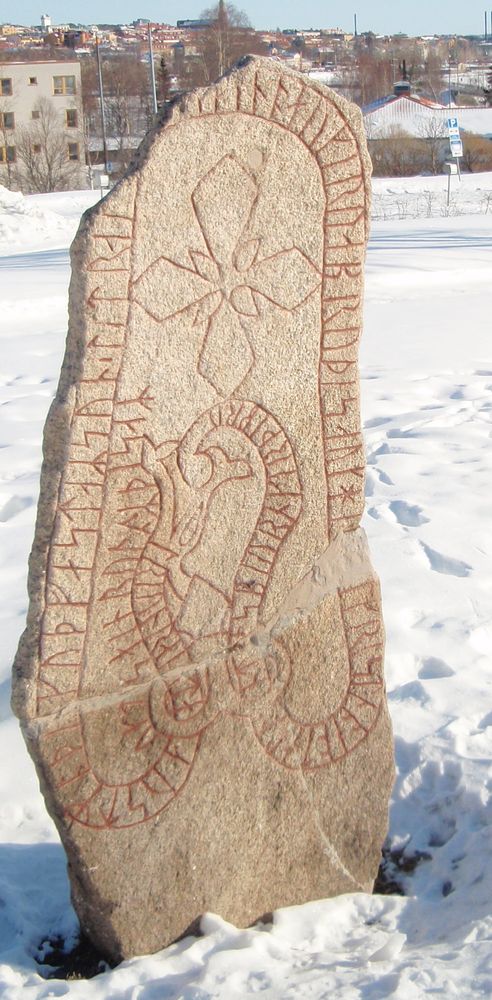
Storsjöodjuret is described as a serpentine or aquatic reptile with fins across its back and the head of a dog. It is reported to measure approximately six meters long, and some accounts describe it as having several humps. – Source
North America
The Beast of Bray Road is described by purported witnesses in several ways: as a bear-like creature, as a hairy biped resembling Bigfoot, and as an unusually large (2–4 feet tall on all fours, 7 feet tall standing up) intelligent wolf-like creature apt to walk on its hind legs and weighing 400-700 pounds. It also said that its fur is a brown gray color resembling a dog or bear. – Source
2. Dover Demon
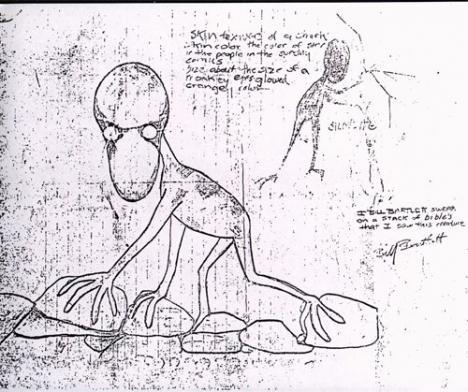
The Dover Demon is an alleged cryptozoological creature sighted on three separate occasions during a 25-hour period in the town of Dover, Massachusetts on April 21 and April 22, 1977. – Source
3. Ghost Deer
According to legend, when shot at, bullets will fly right through the deer, or miss it. The “animal” also seems to appear and disappear with no traces of it. Attempts have been made to track its prints, only to find that they simply “end” at one point. – Source
4. Grassman
Grassman, also known as the Ohio Grassman and Kenmore Grassman, is an alleged bipedal, ape-like creature reportedly seen in the state of Ohio, primarily around Kenmore, near the Akron, Ohio area and throughout Eastern Ohio into Western Pa. and central and southern Ohio into WV. It was first allegedly sighted in Gallia County, Ohio in 1869. Grassman’s main foodsouce is wheat grass. – Source
5. Igopogo
According to legend, the Igopogo is described with a relatively canine-esque head, differing from other well-known cryptozoological creatures. Because of this, many believers have speculated that it is related to such canine-like aquatic animals as the Irish crocodile; also known as the Dobhar-chu. – Source
6. Jersey Devil

[youtube=http://www.youtube.com/watch?v=JAaRY5bqYSc&w=584&h=390]
The Jersey Devil is a legendary creature or cryptid said to inhabit the Pine Barrens of Southern New Jersey, United States. The creature is often described as a flying biped with hooves, but there are many different variations. The common description is that of a kangaroo-like creature with the head of a goat, leathery bat-like wings, horns, small arms with clawed hands, cloven hooves and a forked tail. It has been reported to move quickly and often is described as emitting a “blood-curdling scream.” – Source
Numerous sightings in July 1969 led to the belief of a half-man, half-goat creature living in Lake Worth in Texas. Terry Deckard, a reporter, wrote an article about it in the newspaper, which made the front page. The headline read: “Fishy Man-Goat Terrifies Couples Parked at Lake Worth.” The couples that reported the sightings described it as a half-man, half-goat, with fur and scales. – Source
8. Melon heads

Melon Heads is the name given to legendary beings and urban legends in parts of Michigan, Ohio, and Connecticut generally described as small humanoids with bulbous heads who occasionally emerge from hiding places to attack people. Different variations of the legend attribute different origins. – Source
9. Mothman

Mothman is a legendary creature reportedly seen in the Point Pleasant area of West Virginia from 15 November 1966 to 15 December 1967. The first newspaper report was published in the Point Pleasant Register dated 16 November 1966, titled “Couples See Man-Sized Bird…Creature…Something”. – Source
The Pope Lick Monster is a legendary part-man, part-goat and part-sheep creature reported to live beneath a Norfolk Southern Railway trestle over Floyd’s Fork Creek, in the Fisherville area of Louisville, Kentucky. – Source
11. Pukwudgie
Native Americans believed that Pukwudgies were best left alone. When you see a Pukwudgie you are not supposed to mess with them, or they will repay you by playing nasty tricks on you, or by following you and causing trouble. They were once friendly to humans, but then turned against them. They are known to kidnap people, push them off cliffs, attack their victims with short knives and spears, and to use sand to blind their victims. – Source
12. Thunderbird

Thunderbird is a term used in cryptozoology to describe large, bird-like creatures, generally identified with the Thunderbird of Native American tradition. Similar cryptids reported in the Old World are often called Rocs. Thunderbirds are regarded by a small number of researchers as having lizard features like the extinct pterosaurs such as Pteranodon. Reports of Thunderbird sightings go back centuries, and the fossil record does show that giant birds (teratorns) with wingspans between 12 and 18 ft (3.7 and 5.5 m) were likely contemporary with early man. Today the creature is generally regarded as a myth. – Source
Oceania
1. Bunyip
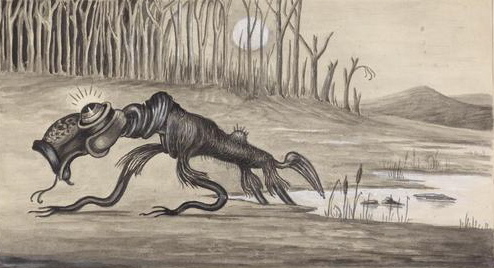
The bunyip, or kianpraty, is a large mythical creature from Aboriginal mythology, said to lurk in swamps, billabongs, creeks, riverbeds, and waterholes. – Source
2. Gazeka
Monckton’s Gazeka, also called the Papuan Devil-Pig, is a cryptid, an animal said to have been seen on Papua New Guinea in the early 20th century. It is said to resemble a tapir or giant sloth, having a long, proboscis-like snout, and some theories suggest it may be the descendant of an extinct marsupial belonging to the family Palorchestidae. – Source
3. Ropen
According to the book Searching for Ropens, it is “any featherless creature that flies in the Southwest Pacific, and has a tail-length more than 25% of its wingspan.” On Umboi Island the word “ropen” refers to a large nocturnal creature that glows briefly as it flies. – Source
South America
1. Mapinguari
According to native folklore the creature has a series of unnatural characteristics related to other fantastic beings of Brazilian mythology. These include the creature only having one eye, long claws, caiman skin, backward feet and a second mouth on its belly. In more recent eyewitness accounts it has consistently been described as resembling either an ape or giant ground-dwelling sloth and having long arms, powerful claws that could tear apart palm trees, a sloping back, reaching heights of 7 feet when standing on its hind legs and is covered in thick, matted fur. – Source
2. Maricoxi
Maricoxi are reported as being aggressive to humans. In alleged encounters, they attack humans on sight. They are said to be scared of the noise of guns. – Source
3. Minhocão

The minhocão (“big earthworm” in Brazilian Portuguese) is a large earthworm-like cryptid that allegedly exists in the forests of South America. – Source
4. Mono Grande
The Mono Grande (Spanish for “Large Monkey”), a large monkey-like creature, has been occasionally reported in South America. Such creatures are reported as being much larger than the commonly accepted New World monkeys. These accounts have received rather little publicity, and typically generated little or no interest from mainstream experts, but have received some notice in cryptozoology. – Source

